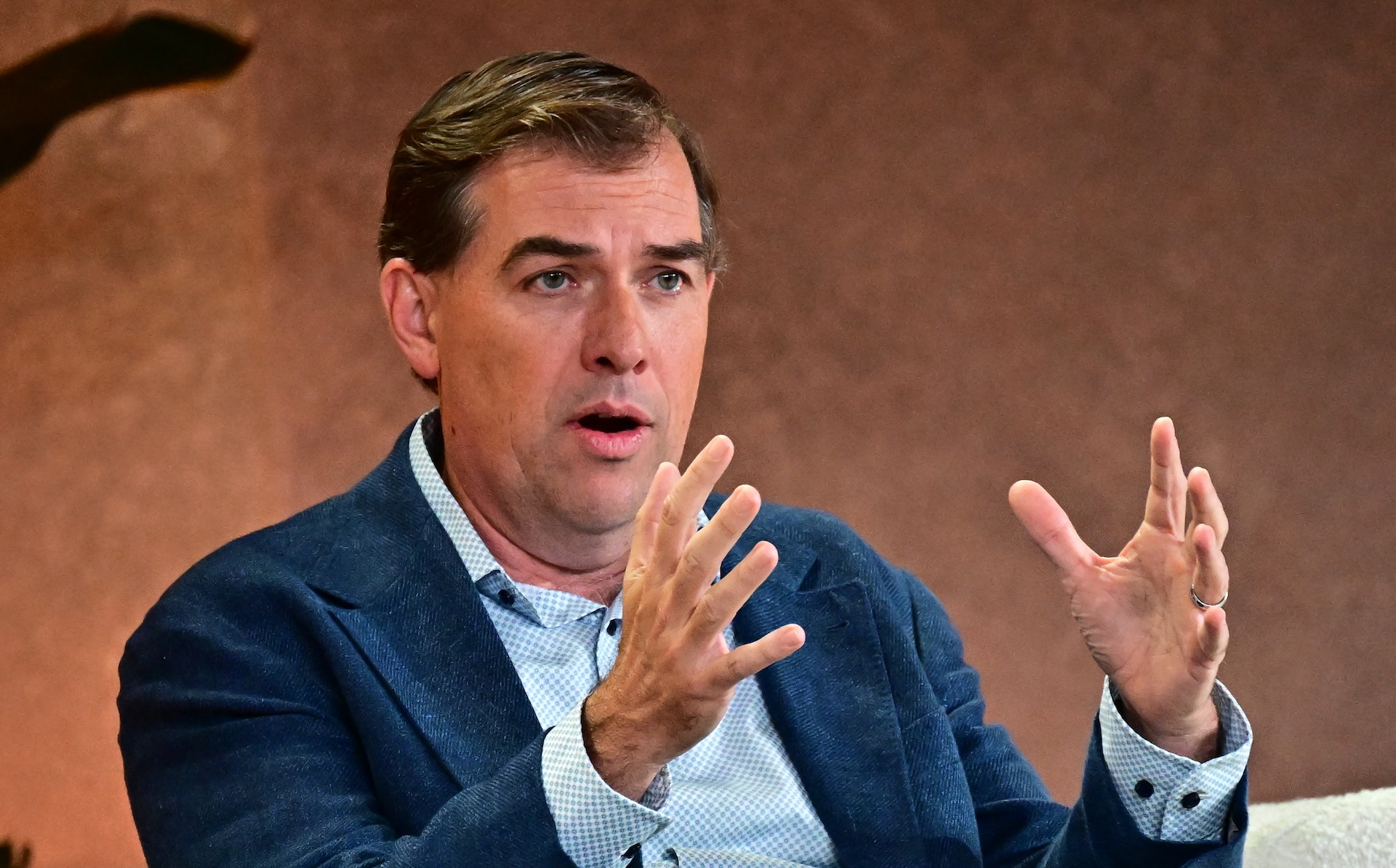
Since its public debut in November 2022, OpenAI’s text-generating artificial intelligence, ChatGPT, has fundamentally reshaped the landscape of digital interaction and productivity, rapidly evolving from a novel tool for generating essays and code to a cornerstone of modern technological advancement. The initial wave of excitement surrounding its capabilities quickly translated into unprecedented adoption, propelling the chatbot to over 300 million weekly active users within a remarkably short period. This swift integration into daily life underscores a pivotal moment in AI, where sophisticated language models became accessible to the general public, sparking both awe and intense debate across industries.
From Research Project to Global Phenomenon: The Genesis of ChatGPT
OpenAI, founded in 2015 with a mission to ensure artificial general intelligence (AGI) benefits all of humanity, initially operated as a non-profit entity. Its journey into advanced AI models began with foundational research, leading to the development of the Generative Pre-trained Transformer (GPT) series. Prior to ChatGPT, AI chatbots were largely limited to rule-based systems or highly specialized applications. The release of GPT-3 in 2020, with its unprecedented scale and language generation capabilities, hinted at the transformative potential of large language models (LLMs). However, it was ChatGPT, built on the GPT-3.5 architecture and later upgraded, that truly democratized access to this technology. Its intuitive conversational interface eliminated the need for complex programming knowledge, allowing millions to experience the power of generative AI firsthand. This accessibility catalyzed a global explosion of interest, demonstrating how a user-friendly wrapper could unleash a technology’s latent potential. The chatbot’s initial utility spanned diverse applications, from streamlining content creation and academic assistance to accelerating software development through code generation and debugging, quickly establishing it as a versatile digital assistant.
Expanding Capabilities: Multimodality and Advanced Models
The trajectory of ChatGPT in 2024 and 2025 has been marked by relentless innovation and an ambitious expansion of its capabilities, moving far beyond mere text generation. A significant leap occurred with the introduction of GPT-4o, an advanced model featuring real-time voice interaction. This development transformed ChatGPT from a text-based interface into a truly conversational AI, capable of understanding and responding to spoken language with remarkable fluidity and nuance. The integration of voice capabilities signaled OpenAI’s commitment to more natural human-computer interfaces, paving the way for applications requiring instantaneous, auditory responses.
Complementing this, the highly anticipated launch of Sora, OpenAI’s text-to-video model, showcased the company’s foray into generative visual media. Sora’s ability to create realistic and imaginative video sequences from simple text prompts holds immense potential to revolutionize content creation, filmmaking, and advertising, though it also raises complex questions about authenticity and the future of creative industries.
Strategic partnerships have further cemented ChatGPT’s market position. The collaboration with Apple, integrating generative AI offerings like Apple Intelligence, promises to embed ChatGPT-like functionalities deeply within Apple’s ecosystem, from Siri to various native applications. This move not only expands ChatGPT’s reach to a massive user base but also intensifies competition in the personal assistant market, challenging established players and setting new benchmarks for intelligent device interaction.
OpenAI’s continuous development cycle is evident in the proliferation of specialized models. Beyond GPT-4o, the company has introduced a spectrum of AI reasoning models such as o3, o4-mini, and the powerful GPT-5, each tailored for different performance characteristics and cost efficiencies. GPT-5, unveiled in August 2025, represented a significant generational leap, offering enhanced intelligence and the ability to autonomously handle complex tasks like app coding, calendar management, and comprehensive research. This diversification strategy allows OpenAI to cater to a broader range of enterprise and developer needs, from high-performance applications to more budget-conscious deployments, while maintaining a competitive edge against burgeoning rivals.
Broadening Reach: User Growth and Accessibility Initiatives
The growth trajectory of ChatGPT has been nothing short of explosive. By October 2025, weekly active users had surged to an astonishing 800 million, a testament to its pervasive utility across consumer, developer, enterprise, and governmental sectors. This rapid expansion necessitated a focus on wider accessibility and tailored solutions.
OpenAI introduced its affordable ChatGPT Go plan, priced under $5, to 16 new Asian countries, including nations like Indonesia, Afghanistan, and Vietnam. This initiative aimed to lower the barrier to entry for users in emerging markets, often allowing payments in local currencies, thereby fostering broader global adoption. Furthermore, OpenAI made ChatGPT’s web search accessible without requiring a login, albeit with some feature limitations, democratizing access to its AI capabilities.
For institutional users, OpenAI launched ChatGPT Gov, a specialized tier designed for U.S. government agencies, offering enhanced security, privacy, and compliance features. This strategic move, coupled with an offer of ChatGPT Enterprise for federal agencies at a symbolic $1 for the first year, highlighted OpenAI’s aggressive push into public sector workflows. Similarly, the company offered its ChatGPT Plus subscription free to college students in the U.S. and Canada, recognizing the educational impact and fostering a new generation of AI-literate users. These initiatives collectively underscore OpenAI’s strategy to embed ChatGPT across all facets of digital life, from individual consumers to large-scale enterprises and government bodies.
Navigating New Frontiers: E-commerce, Education, and Creative Industries
ChatGPT’s influence has permeated various sectors, demonstrating its versatility beyond basic chat functionalities. In e-commerce, OpenAI forged partnerships with retail giants like Walmart, allowing users to browse products, plan meals, and make purchases directly through ChatGPT. This was further expanded with "Instant Checkout" for Etsy and Shopify merchants, enabling users to complete transactions within the conversation interface. These developments signal a move towards "agentic shopping," where AI acts as a proactive assistant, streamlining discovery, recommendations, and purchasing, potentially disrupting traditional online retail models dominated by search engines and marketplaces.
In education, OpenAI introduced "Study Mode," a feature designed to encourage critical thinking by prompting students to engage deeply with material rather than passively receiving answers. This came amid debates about AI’s role in academia, with some educators expressing concern over potential plagiarism and others embracing AI as a learning aid. An MIT study, for instance, suggested that ChatGPT might be harming critical thinking skills by reducing brain engagement during writing tasks, sparking an ongoing discussion about balancing AI assistance with the development of fundamental human cognitive abilities.
The creative sphere has also experienced a profound impact. The viral phenomenon of "Studio Ghibli-style images" generated by ChatGPT’s upgraded image capabilities highlighted both the artistic potential and the ethical quagmire of AI-generated content. These images, while captivating, immediately raised copyright infringement concerns, particularly given OpenAI’s existing legal challenges over unauthorized use of training data. OpenAI responded by adjusting its content moderation policies, permitting the generation of images of public figures and certain previously restricted symbols, signifying a delicate balancing act between creative freedom and responsible AI deployment.
The Human Element: Mental Health, Ethics, and Societal Impact
The profound integration of AI into human interaction has brought forth significant ethical and social considerations. A striking revelation in October 2025 was that over a million ChatGPT users weekly engaged with the AI about severe mental health struggles, including suicidal thoughts, psychosis, and mania. This unexpected use case compelled OpenAI to consult over 170 mental health experts to refine ChatGPT’s responses, aiming for more appropriate and supportive interactions. The tragic lawsuit following a teen’s suicide, alleging the chatbot’s role, prompted OpenAI to implement stronger safeguards, parental controls, and stricter policies for minors, underscoring the critical need for responsible AI design in sensitive areas.
Beyond mental health, concerns about data privacy and the accuracy of AI-generated information have intensified. A privacy complaint in Europe, supported by advocacy group Noyb, highlighted instances where ChatGPT "hallucinated" defamatory false information about individuals. This brought the "hallucination problem" — where AI models confidently generate factually incorrect yet plausible-sounding responses — into sharp focus, emphasizing the challenge of ensuring factual accuracy and the right to rectify personal data under regulations like GDPR. OpenAI’s response included pledges to improve internal procedures to prevent "sycophancy" or overly agreeable behavior, acknowledging the need for continuous refinement of AI "personality" and factual grounding.
The environmental footprint of AI also entered the discourse, with discussions around the energy and water consumption of large language models. While some analyses suggested that an average ChatGPT query consumed less energy than commonly assumed, the cumulative impact of billions of daily prompts and massive data center projects (like OpenAI’s $50B "Project Stargate") raises long-term sustainability questions for the industry.
Internal Strife and External Scrutiny: Legal Battles and Governance Questions
OpenAI’s meteoric rise has not been without significant internal and external turbulence. The year 2024 saw notable departures of high-level executives, including co-founder and chief scientist Ilya Sutskever and CTO Mira Murati. Such internal reshuffles often signal underlying tensions regarding research direction, ethical guardrails, or the company’s evolving strategic vision.
Externally, OpenAI faced a barrage of legal challenges. Alden Global Capital-owned newspapers filed lawsuits alleging copyright infringement, claiming their content was used without authorization to train AI models. This legal battle is emblematic of a broader industry-wide reckoning over intellectual property rights in the age of generative AI. Perhaps most famously, Elon Musk, an early co-founder of OpenAI, filed an injunction to halt the company’s transition to a for-profit model, alleging a deviation from its original non-profit, open-source mission. Musk’s xAI also launched a federal lawsuit against Apple and OpenAI, alleging anti-competitive collusion in the AI market. These lawsuits highlight the complex governance issues and philosophical disagreements surrounding the development and commercialization of powerful AI technologies.
In response to growing scrutiny and the need for global infrastructure, OpenAI initiated "OpenAI for Countries," a program aimed at collaborating with governments to build local AI infrastructure, increase data center capacity, and customize AI products for specific linguistic and regional needs. This global outreach is crucial for navigating diverse regulatory landscapes and securing the resources necessary for continued expansion.
The Intensifying AI Race: Competition, Infrastructure, and Future Vision
As 2025 progressed, OpenAI found itself in an increasingly intense global AI race, battling the perception of ceding ground to rivals, particularly from Chinese companies like DeepSeek, which are rapidly advancing their own LLM capabilities. This competitive pressure spurred OpenAI to accelerate its efforts to secure its position.
The company’s ambitious data center project, reportedly valued at $50 billion, and its pursuit of one of the largest funding rounds in history, aiming for a $340 billion valuation, underscore the colossal capital expenditure required to develop and deploy cutting-edge AI. These investments are critical for acquiring the vast computational resources—especially advanced AI chips—needed to train increasingly complex models and serve a rapidly expanding user base. OpenAI’s move to use Google’s AI chips alongside Nvidia’s GPUs signals a strategic diversification of its hardware supply chain in response to immense demand.
In a notable shift, OpenAI also began to re-engage with the open-source community, announcing plans to release new "open" language models, a departure from its predominantly proprietary approach since GPT-2. This move could be seen as a response to growing calls for more transparency and accessibility in AI development, as well as a competitive strategy against fully open-source models gaining traction.
Looking Ahead: The Evolving Landscape of AI
OpenAI’s journey with ChatGPT reflects a dynamic interplay of rapid technological advancement, profound societal impact, and complex ethical and commercial challenges. The company’s vision, as articulated by CEO Sam Altman, includes making ChatGPT deeply personalized, capable of "remembering every detail of a person’s life" to act as a truly ubiquitous and proactive agent. This future, while promising unparalleled utility, also opens new discussions about privacy, data sovereignty, and the very nature of human-AI partnership.
From enhancing productivity and transforming e-commerce to confronting critical issues in mental health and navigating a complex legal and competitive landscape, ChatGPT remains at the forefront of the AI revolution. Its evolution continues to shape how we work, learn, create, and interact, constantly pushing the boundaries of what is possible while simultaneously highlighting the imperative for responsible innovation and thoughtful governance in the age of artificial intelligence.





